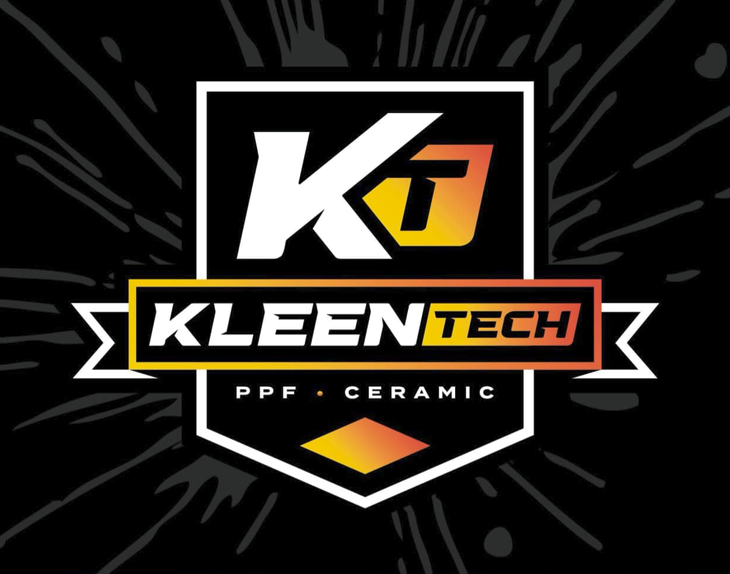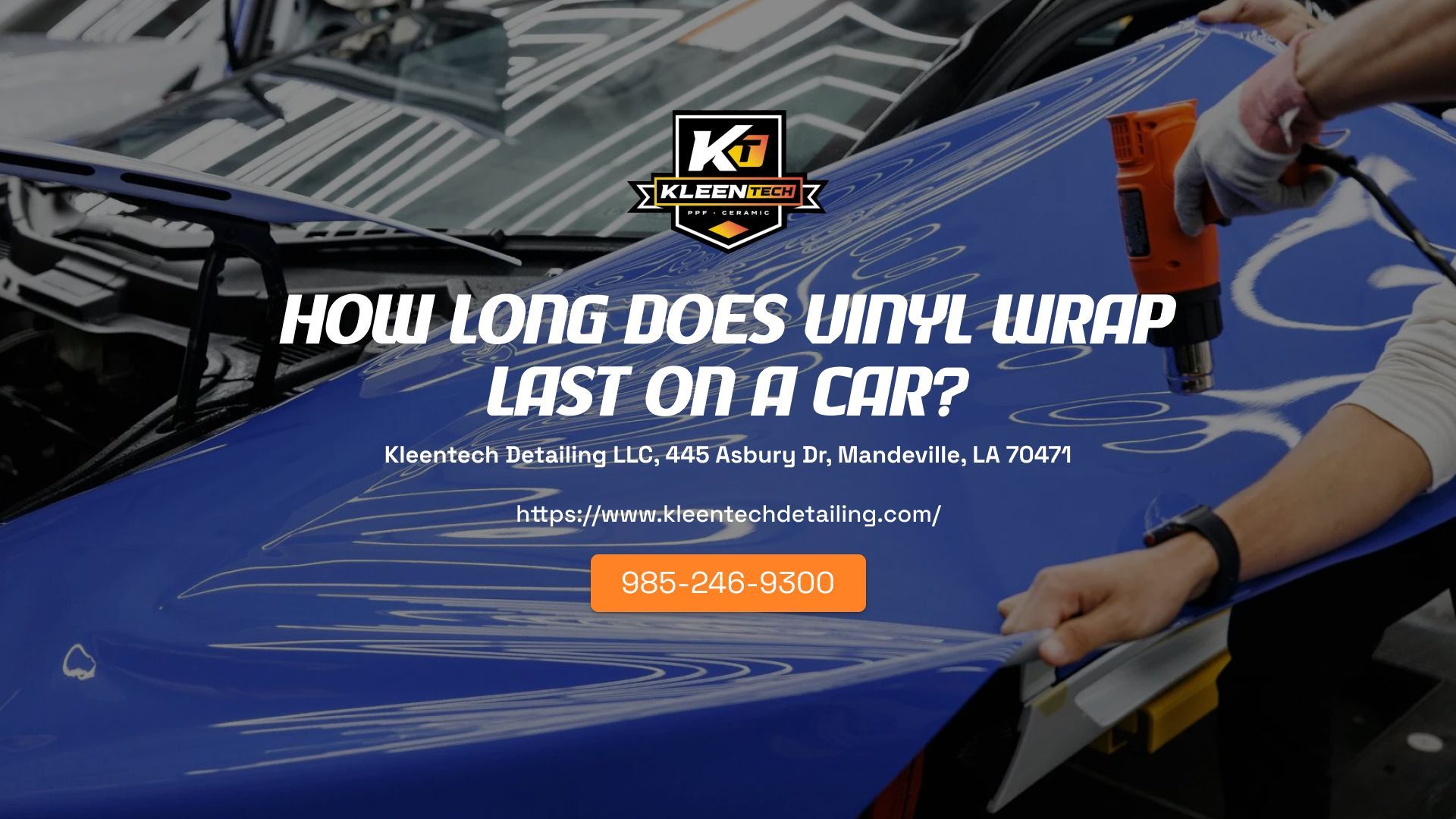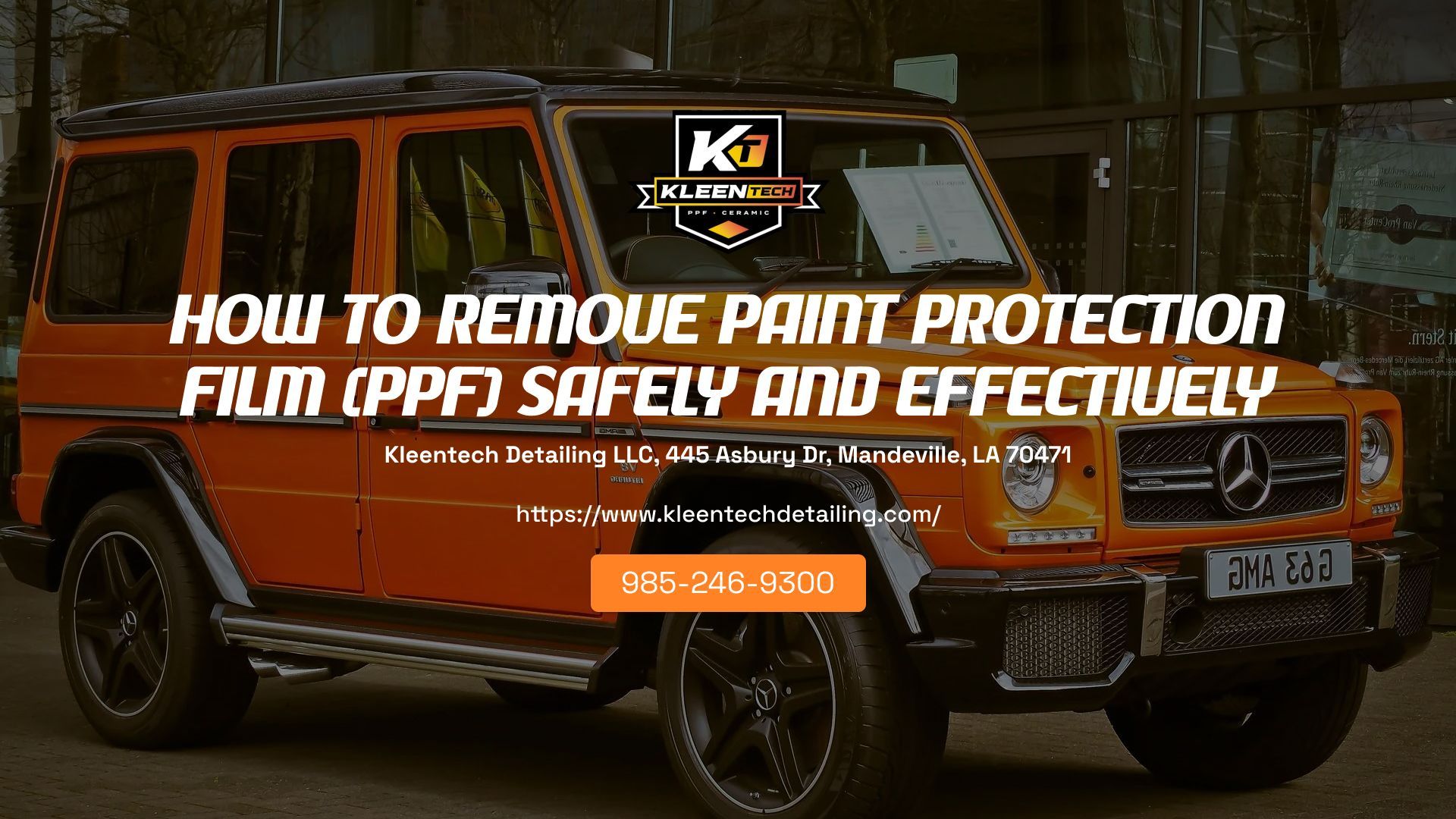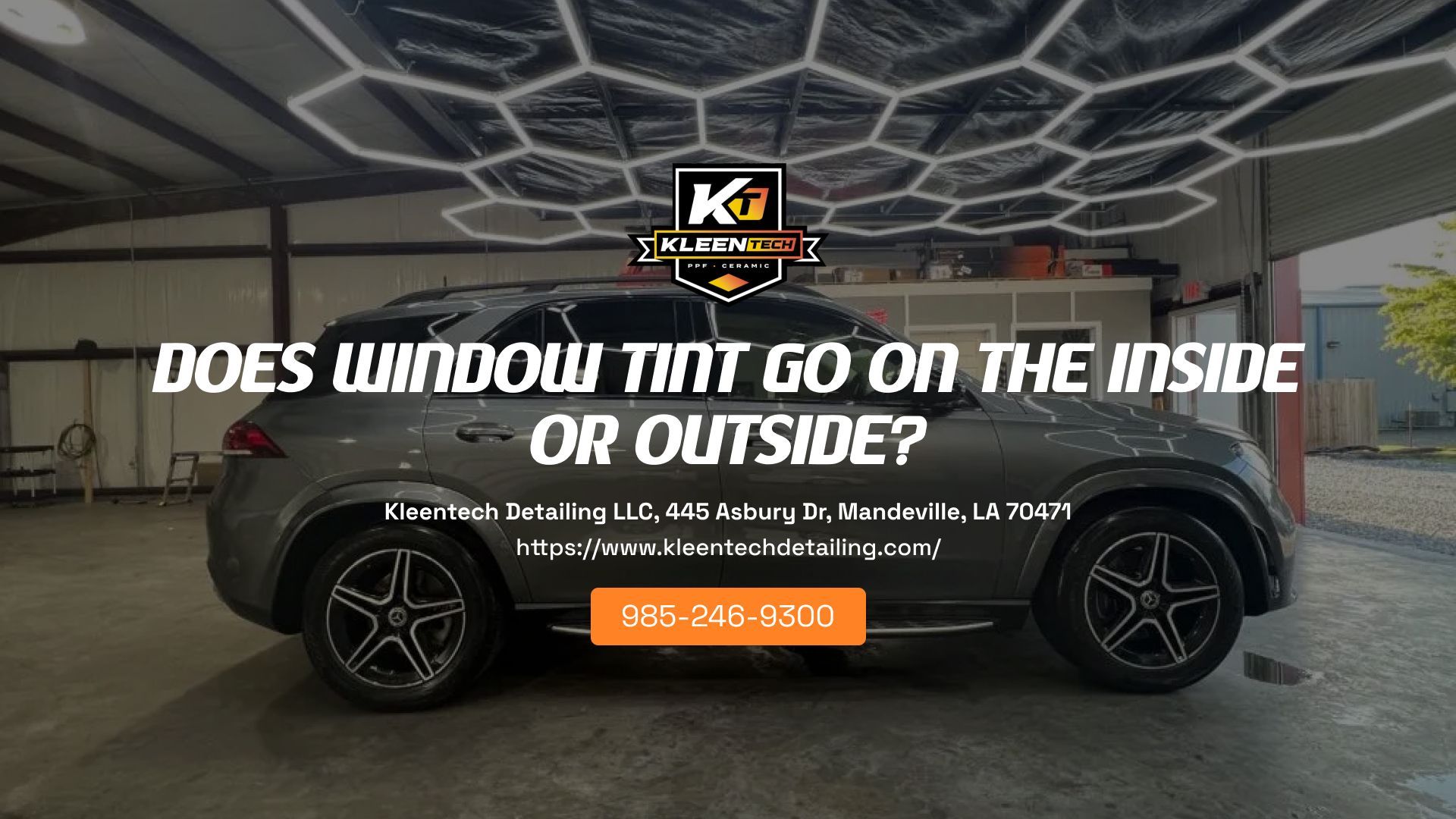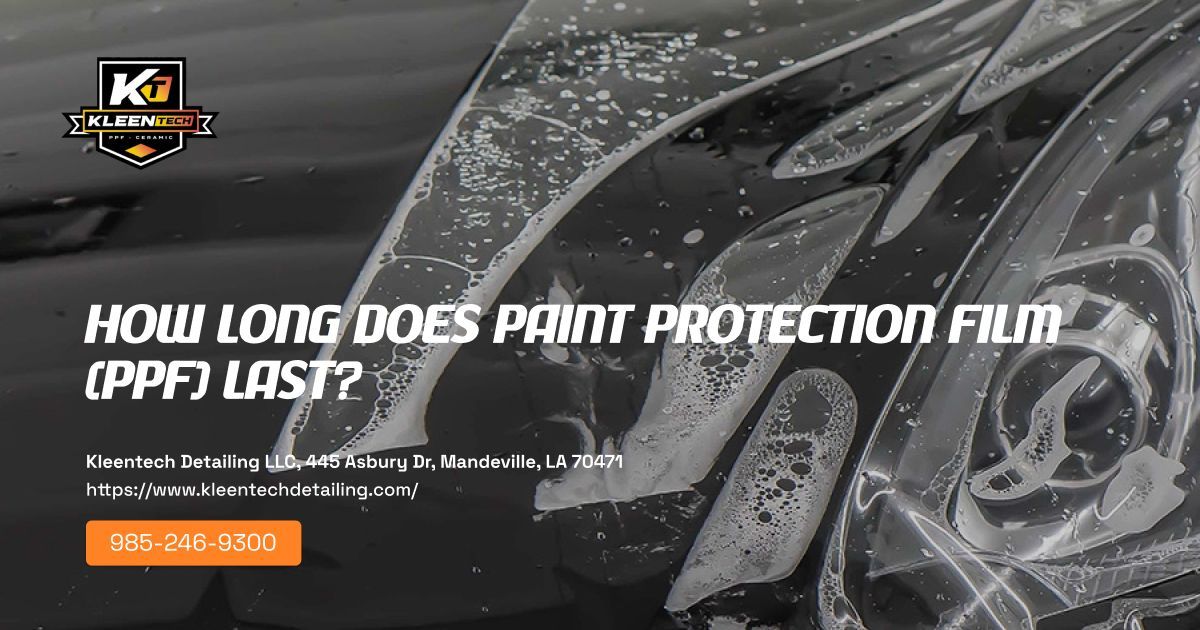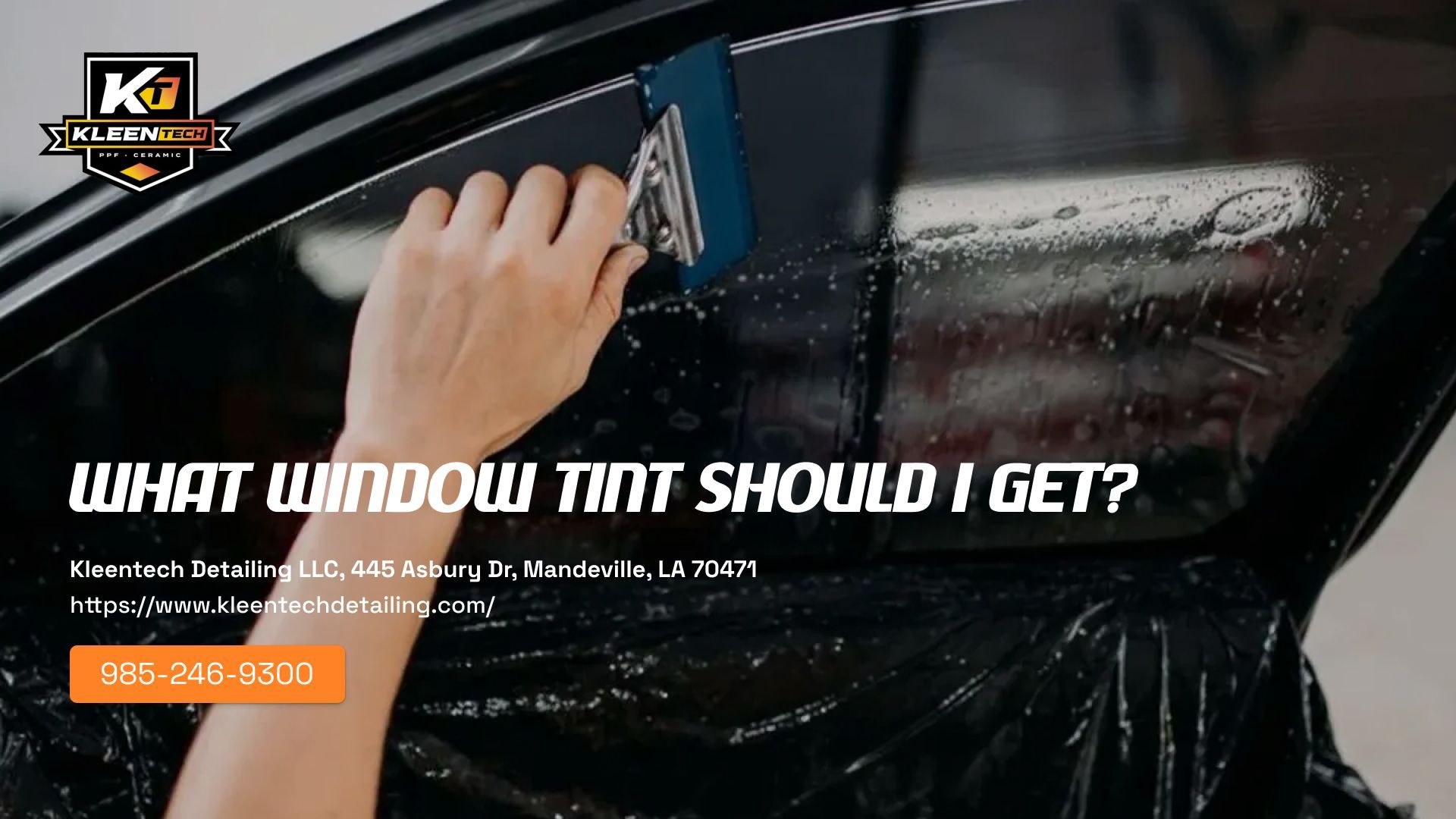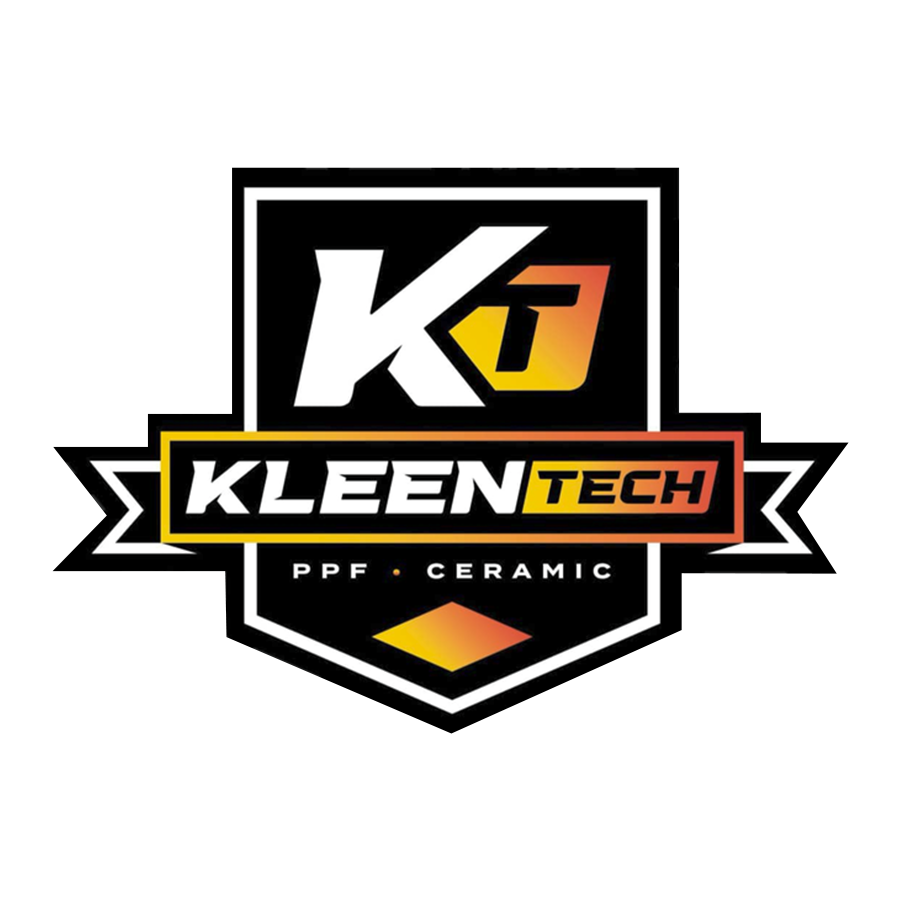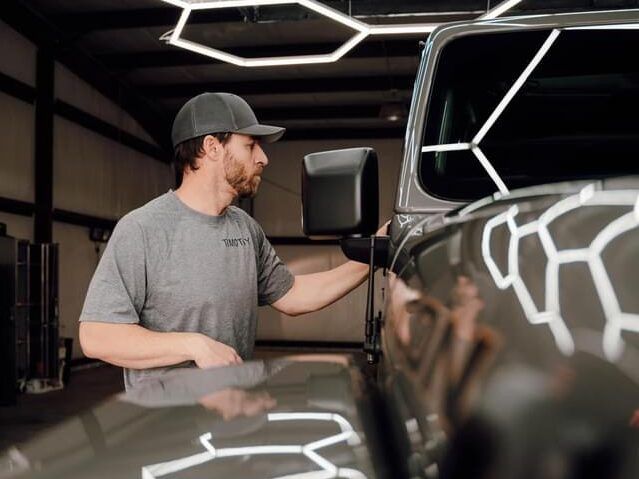Ceramic Coating vs. Wax: What’s the Difference?
Table of Contents
Are you tired of the same old car waxing routine? Have you ever wished that there was a better way to make your car shine and protect it from dirt, debris, and weather damage? If so, then consider looking into ceramic coatings for cars! Ceramic coating is a revolutionary new product that has taken the automotive world by storm. It offers superior protection against scratches, UV rays, extreme temperatures and more. In this article we will compare ceramic coatings to traditional waxes and discuss the differences between them.
Ceramic coatings are gaining popularity in the auto industry as an alternative to traditional waxes. They provide superior resistance to environmental factors such as heat, cold, acid rain, bird droppings, ultraviolet radiation and other damaging elements. Furthermore, they offer increased durability when compared with regular waxes; meaning that they last longer before needing reapplication. Additionally, because ceramic coatings do not require frequent application like typical waxes do; they can save you time and money on maintenance costs in the long run.
Finally, one of the major advantages of using ceramic coatings over traditional wax products is their ability to repel contaminants rather than just mask them with coloring agents or fragrances. This makes them a much more effective option for protecting your vehicle’s exterior surfaces from dirt and grime buildup over time. By understanding these benefits—as well as how ceramic coatings stack up against traditional waxes—you’ll be able to make an informed decision about which type of protection best suits your needs.
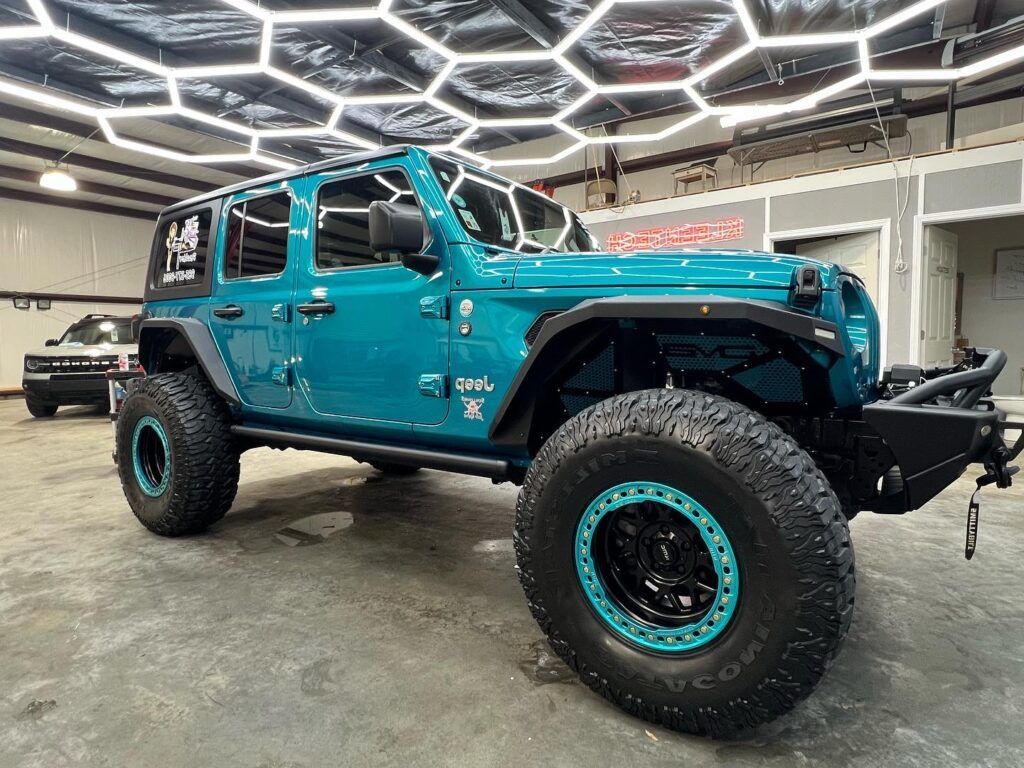
Understanding Traditional Wax
Traditional wax has been a go-to for car owners when it comes to protecting and shining their vehicles. Wax creates a protective barrier between the paint of your car and road contaminants, such as dirt, tar, salt, and bugs. It’s easy to apply – just rub on the wax in circular motions with a cloth or sponge and let dry before wiping off any excess product.
When comparing traditional wax to car ceramic coatings, there are some key differences. Car ceramic coatings have become popular recently because they offer better protection than traditional wax due to its molecular structure that bonds directly onto the topcoat of your car’s paint job. Ceramic coating also lasts longer than traditional wax – up to five years versus six months respectively – making it an attractive option for those looking for long-term protection without having to frequently reapply. However, while ceramic coating is more expensive than traditional wax upfront, you can save money over time by not needing frequent reapplication services like you would with regular waxing.
These comparison FAQs provide more information about how these two products work differently and which one may be best suited for your vehicle depending on your needs: How much does each cost? What kind of protection do they offer? How often will I need to reapply them?
How Traditional Wax Works
Traditional wax is a popular car care product used to protect and shine the exterior of cars. It’s easy to apply, requires minimal effort, and provides some protection from dirt, dust, and grime. In addition, traditional wax can give your vehicle an attractive glossy finish.
But how does it work? Traditional wax works by creating a thin layer over the surface of the paint that prevents environmental contaminants like road salts or bird droppings from coming into contact with the paint directly. This barrier helps block out UV rays that can cause fading or discoloration and protects against scratches caused by everyday wear-and-tear. The wax also adds additional gloss and shine to the painted surface. All in all, traditional wax is an effective way to keep your car looking its best for longer periods of time.
While traditional wax offers some advantages such as ease of use and affordability compared to ceramic coatings, it doesn’t provide quite as much protection as ceramic coatings offer due to their thicker layers which are more durable and resist oxidation better than regular waxes do.
Advantages Of Traditional Wax
Car wax has been the go-to choice for protecting and preserving cars for decades. It’s a cost effective solution that is easy to apply and can last several months before needing reapplication. But, what are some of the advantages it offers?
First, traditional car wax adds a layer of protection against environmental elements like UV rays, bird droppings, acid rain, and dirt build up. This protective barrier helps keep your car looking shiny and new longer. Additionally, since waxing requires minimal effort to apply and remove, you don’t have to worry about spending time or money on professional treatments. Finally, regular wax application will help give your vehicle an extra sparkle as it fills in small scratches and imperfections in the paint job.
Given these benefits, many people choose to use traditional car wax over other options such as ceramic coatings or sealants when trying to protect their vehicles from damage caused by everyday wear and tear. While there may be more expensive solutions available with higher levels of protection – none offer the ease of application or affordability that comes with using car wax.
Drawbacks Of Traditional Wax
Traditional wax is a popular option for protecting vehicle paint, but it does come with some drawbacks. While wax can provide excellent protection from water and dirt buildup, the main issue arises when it comes to durability. Wax coatings tend to wear away or degrade after only a few weeks of exposure to sunlight and washing. This means that car owners have to reapply the wax every couple of months in order to maintain its protective benefits. Additionally, traditional wax also has poor self-cleaning properties – meaning that any bugs, tar or bird droppings will need scraping off rather than simply rinsing away.
In comparison, ceramic coatings offer superior levels of protection and require less maintenance over time. Ceramic coatings create an incredibly durable layer on top of the paintwork which provides greater resistance against scratches, UV rays and other environmental pollutants such as road salt or polluted air. Furthermore, these types of coatings are hydrophobic (water repellent) so they can easily shed rainwater without needing frequent touchups – making them much more practical for busy drivers who don’t want to spend their weekends maintaining their cars!
Understanding Car Ceramic Coatings
When it comes to maintaining the paint job of a car, ceramic coatings offer more protection than traditional wax. Ceramic coatings are made up of liquid polymers that bond with the surface and form a protective layer against dirt and debris. While they do provide superior shine and durability compared to traditional wax, there are some important differences between them.
Firstly, when applied correctly, ceramic coatings typically last much longer than wax — sometimes even up to five years! This means less time spent on maintenance overall. Furthermore, many ceramic coating products contain hydrophobic properties which repel water from the vehicle’s bodywork, helping to keep it clean for longer periods of time. In addition, since ceramic coatings create an extra hard shell around your car’s painted surfaces, they offer better resistance against scratches or other damage caused by environmental elements such as UV rays or bird droppings.
On the downside though, applying a ceramic coating can be difficult and requires special equipment to get optimal results; whereas waxing is relatively easy and can usually be done at home without any tools or training required. Moreover, if you decide to remove the coating prematurely due to wear-and-tear or fading over time, you may end up damaging your car’s paint finish in the process – something that wouldn’t happen with regular waxing. All things considered however, understanding what each option offers will help you make an informed decision based on your individual needs when it comes to protecting your car’s paint job.
How Car Ceramic Coatings Work
When it comes to protecting your car’s paint, ceramic coatings are becoming increasingly popular as an alternative to traditional waxing. But how do they work? This article will explain the key differences between ceramic coatings and waxing, so you can make an informed decision about which one is best for your vehicle.
Ceramic coatings create a permanent bond with the surface of your car’s paint. The coating blocks environmental contaminants from coming into contact with the paint job, preventing fading or chipping over time. On top of that, ceramic coatings also act like a shield against dirt and other grime that could damage the finish of your car if left unchecked. In contrast, wax only offers temporary protection because it eventually washes away after exposure to water or ultraviolet light from the sun.
While both options provide some level of protection for your vehicle’s paint job, many drivers prefer ceramic coatings due to their durability and long-term effects on maintaining the condition of their cars. Ceramic coatings offer superior protection against harsh weather conditions and even minor scratches or scuffs without sacrificing shine or glossiness in any way.
Advantages Of Car Ceramic Coatings
Car ceramic coatings offer many advantages over traditional wax. The most obvious advantage is that they last longer than wax, providing up to five years of protection for your car’s paint job. Ceramic coatings also create a layer of protection against dirt and contaminants that wax just can’t match; this helps preserve the color and shine of your vehicle much better than wax alone. Additionally, ceramic coatings repel water very effectively, which makes it easier to clean off any dirt or debris from the surface of your car.
Finally, ceramic coatings are less time-consuming to apply than traditional waxing methods. Wax needs to be applied regularly in order to keep its protective qualities, but with ceramic coating you only have to do it once every few years—saving you plenty of time and effort down the line. Additionally, ceramic coatings don’t require polishing like typical wax does, meaning further savings when it comes to maintenance costs. All in all, car ceramic coatings provide superior protection while being more efficient and cost-effective than traditional waxes.
Drawbacks Of Car Ceramic Coatings
Car ceramic coatings provide a long-lasting, deep shine to your car that’s hard to achieve with traditional wax. However, they can also come with some drawbacks.
For starters, applying ceramic coatings takes more time and effort than simply using wax. It requires the use of multiple steps including washing the surface, claying it, polishing it and finally coating it. This process is relatively involved compared to just slathering on some wax in one step. Additionally, ceramic coatings are often much more expensive than waxes as well.
Ceramic coatings also require special maintenance products like pH neutral soaps to keep them looking their best over time. If you don’t care for your coating properly or wash it too harshly with regular soap or detergents, then its effectiveness will be reduced significantly. Therefore, if you’re not willing to invest in high quality cleaning supplies or put in extra work maintaining your vehicle’s finish, then ceramic coatings may not be the right choice for you after all.
Comparing Car Ceramic Coatings And Traditional Wax
When it comes to protecting your car’s finish, there are a few options available. Car ceramic coatings and traditional wax both offer protection from the elements and can help keep your car looking shiny and new. But what exactly is the difference between these two types of products? Let’s take a look at how they compare.
Car ceramic coatings provide an extra layer of protection for your vehicle that lasts significantly longer than traditional wax. Ceramic coating acts like a clear coat that seals in paint pigments and blocks out dust, dirt, water spots, bird droppings, and whatever else you may encounter on the roads. While this adds protection against scratches, chips, fading, and oxidation caused by weathering or aging over time, it also requires professional installation which can be costly upfront. Traditional wax provides basic protection from UV rays and minor contaminants such as bird droppings but doesn’t last nearly as long as ceramic coating does. It must be reapplied every couple months for best results – otherwise its protective ability diminishes quickly due to exposure to the elements.
So when considering ways to protect your car’s finish, factors such as cost effectiveness and durability should be taken into account. Car ceramic coatings offer superior protection with minimal effort after application while traditional wax needs frequent maintenance to remain effective. Which one would work better for you depends on your individual situation – so make sure to do some research before making a decision!
Durability And Longevity
Durability and longevity are two of the most important factors to consider when comparing car ceramic coatings and traditional wax. Ceramic coatings offer superior durability, lasting up to five times longer than wax. This makes them ideal for protecting a vehicle’s paint job from environmental elements like UV rays, dirt, and contaminants in the air, ensuring that your car looks great for years to come. On the other hand, wax needs to be applied more frequently since it wears down faster than ceramics.
The increased lifespan of ceramic coatings comes at a price – they cost much more upfront than wax. However, if you factor in how often you’ll need to reapply wax over time due to its shorter lifespan, ceramic coatings actually become more economical in the long run. Additionally, many people find that ceramic coatings provide a better shine right away than regular wax does. So while there is an initial investment involved with getting a ceramic coating on your vehicle, it can be well worth it for those looking for long-lasting protection and aesthetic appeal.
Ceramic coatings and traditional wax have distinct advantages and disadvantages which should be carefully weighed before making a decision about what type of protective finish is best for your car or truck’s exterior surface. Each option has its own set of benefits so it’s ultimately up to you to decide which one will provide the level of performance you’re after.
Ease Of Application And Maintenance
When it comes to ease of application and maintenance, ceramic coatings are far superior to traditional wax. Unlike wax, which requires frequent reapplication as it wears off over time, once a ceramic coating is applied correctly it will provide long-term protection against the elements for years. The process of applying a ceramic coating can be more complicated than simply spreading on some wax but the end result is worth the effort.
In contrast, traditional waxing takes much less time and effort overall – from preparation through to final buffing – making it ideal for those who don’t want a large commitment or have limited amounts of free time. Maintenance also tends to be easier with regular cleaning and occasional touch-ups helping extend the life of your vehicle’s finish.
Clearly, both solutions offer their own unique advantages when it comes to protecting your car’s exterior; whether you opt for the convenience of wax or longer lasting protection offered by ceramic coatings will depend on how much time and money you’re willing to dedicate towards maintaining its appearance.
Cost Comparison
When it comes to cost comparison, ceramic coatings are typically more expensive than traditional wax. Ceramic coating costs can range from a few hundred dollars up to a couple of thousand depending on the vehicle and its size. On the other hand, traditional wax is much less costly with prices ranging from just a few bucks up to $50 or so for higher-end products.
When looking at longterm costs, however, ceramic coatings may be more economical despite their upfront expense. While wax needs to be applied every several weeks or months in order to keep protection levels high, ceramic coatings last for years without any reapplication required. This makes them an attractive option for those wanting longer-lasting protection – even if it does come at a greater initial cost.
Conclusion
In conclusion, car ceramic coatings offer many advantages over traditional wax that make them worth considering. They require less time to apply than wax and may provide better protection from UV damage. Additionally, they can be used in combination with traditional wax for added protection. The use of car ceramic coatings also has environmental benefits as it eliminates the need for harsh chemicals often found in traditional waxes. However, special tools or equipment may be required to properly apply the coating which should be considered when making a decision on which product to use. Ultimately, taking into account its time-saving properties and superior performance capabilities, car ceramic coatings are an attractive alternative to traditional wax products.
FAQ
What are the differences between a ceramic coating and traditional wax for car protection?
A ceramic coating is a more durable and long-lasting solution compared to traditional wax. Ceramic coatings bond to the paint and create a layer of protection, whereas wax only sits on top of the paint and needs to be reapplied regularly. Ceramic coatings also provide better protection against UV rays, environmental contaminants, and scratches.
How does the cost of ceramic coating compare to traditional wax for car protection?
The initial cost of ceramic coating may be higher than traditional wax, but the long-term savings make it a more cost-effective solution. Ceramic coatings last longer and need fewer reapplications compared to wax, which can add up over time.
Are ceramic coatings more difficult to apply than traditional wax?
Ceramic coatings typically require professional application, while traditional wax can be applied by the car owner. This means that while the initial application of ceramic coating may be more expensive, it provides a longer-lasting solution with less maintenance.
How does car ceramic coating compare to traditional wax in terms of durability and protection?
Car ceramic coating provides much greater durability and protection compared to traditional wax. While traditional waxes may last a few months at most, ceramic coatings can last for up to several years. Ceramic coatings form a hard, protective barrier on the paint surface, which helps to prevent damage from environmental factors, such as UV rays and acid rain, as well as everyday wear and tear. In contrast, traditional waxes simply sit on top of the paint surface and provide only a temporary barrier that wears off over time.
Are there any specific benefits to using car ceramic coatings over traditional waxes for paint protection?
In addition to their greater durability and protection, car ceramic coatings offer several other benefits over traditional waxes. These benefits include:
Hydrophobic properties: Ceramic coatings provide a hydrophobic (water-repellent) effect on the paint surface, which helps to prevent water spots and water damage.
Enhanced gloss and shine: Ceramic coatings can enhance the gloss and shine of the paint surface, giving the car a sleek and polished appearance.
Ease of maintenance: Ceramic coatings are easier to clean and maintain compared to traditional waxes, which need to be reapplied regularly.
UV protection: Ceramic coatings provide better protection against UV rays, which can fade and damage the paint surface over time.

